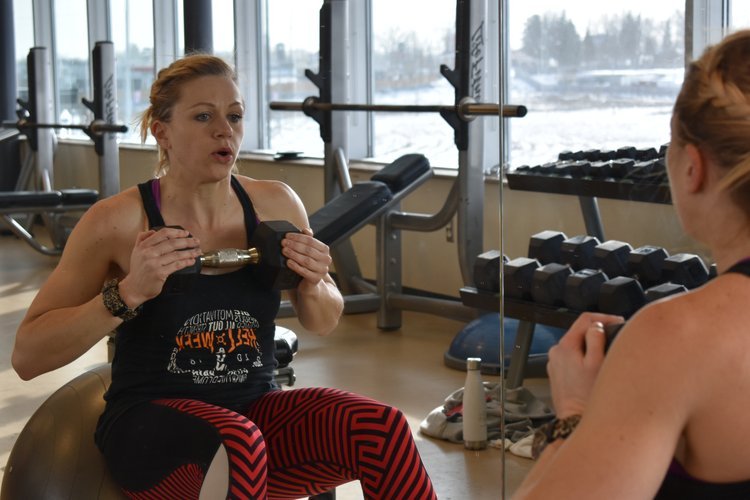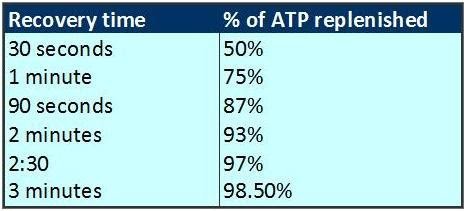Strength Training Truths for Riders: Debunking Myths for Equestrian Excellence
Just like most sports, equestrian athletes require a solid foundation of strength to excel in their sport. Yet, there are common misconceptions that can hinder their strength training progress. Let's explore these myths and set the record straight for equestrian athletes aiming to optimize their performance in the saddle.
Myth #1: Rest Periods Between Sets In the pursuit of enhancing equestrian performance, many riders may overlook the importance of adequate rest between strength training sets. While riders are accustomed to maintaining their balance and posture while riding, it's crucial to recognize that effective strength development demands a different approach.
Unlike the continuous demands of riding, strength training relies on the adenosine triphosphate phospho-creatine (ATP-PC) energy system. This system provides the energy required for powerful movements during strength exercises. Unlike riding, which engages aerobic energy systems, ATP-PC requires substantial recovery time—approximately two to three minutes—to reach optimal levels.
Equestrian athletes must resist the urge to rush between sets and allow their ATP system to fully recharge. Neglecting proper recovery time limits the recruitment of muscle fibers, resulting in a less effective training session. To build strength effectively, it's recommended to allocate at least two minutes of recovery time between each set when lifting heavy.
Myth #2: Repetition Ranges for Endurance Equestrian athletes often assume that high repetitions with low weights mirror the endurance required during prolonged riding sessions. However, this belief overlooks the nuances of effective strength training for riders.
Recent research has shown that repetitions in the range of 12-20 do not significantly improve muscular endurance compared to the 6-8 repetition range. Moreover, since riding already targets muscular endurance, the primary goal of strength training should be to enhance strength.
Instead of fixating on light weights and high repetitions, equestrian athletes should prioritize lifting the heaviest weight they can handle safely for 6-10 repetitions. This approach maximizes muscle overload and engages a greater number of muscle fibers, resulting in improved strength for riding.
Myth #3: Fear of Bulking Up Concerns about appearing overly muscular due to heavy lifting can deter equestrian athletes from embracing effective strength training practices. However, the notion that heavy weights alone lead to excessive muscle mass is rooted in misunderstanding.
Building significant muscle bulk involves more than lifting heavy weights—it's influenced by nutrition and caloric intake, and even more so your genetics. Equestrian athletes are unlikely to gain unwanted mass through strength training, considering the predominant time spent riding and the necessity for overconsumption of calories to induce substantial muscle growth.
Equestrian athletes need not fear resembling bodybuilders (unless you want to!). Incorporating heavy lifting into their training regimen won't lead to undesirable outcomes. Similarly, lifting lighter weights with higher repetitions does not guarantee a more "toned" appearance. The desired muscle definition results from maintaining muscle mass while losing weight.
Myth #4: Timing of Strength Training Aligning strength training with an equestrian athlete's riding regimen is crucial for optimal results. Strength training should not be treated as an isolated addition to riding but integrated into a comprehensive training plan.
Performing intensive strength workouts on recovery or off days can compromise recovery and hinder overall progress. Conversely, scheduling demanding strength training on riding workout days optimizes recovery time and prevents interference with riding performance.
Strategically integrating strength training based on its intensity and specificity is key:
Reserve the most demanding, riding-specific strength routines for after intense riding workouts.
Incorporate moderate-effort routines on regular riding days, focusing on core and hip exercises.
Dedicate off or recovery days to preventive routines (stretching, foam rolling).
Myth #5: Machine vs. Bodyweight and Free Weight Exercises The prevalence of strength training machines in gyms might suggest their efficacy, but equestrian athletes should be cautious about overreliance on them. While machines can appear convenient, they often fall short in effectively engaging relevant muscle groups and supporting functional movements.
For instance, hip strength is crucial for equestrian performance. To effectively target these muscles, exercises should prioritize gluteal activation while minimizing engagement of the tensor fasciae latae (TFL). Machines that isolate the TFL, such as the abductor machine, may prove ineffective or even counterproductive.
Instead of relying solely on machines, equestrian athletes should prioritize bodyweight, free weight, and miniband exercises that engage multiple muscle groups and promote functional strength. By understanding and dispelling these common myths, equestrian athletes can tailor their strength training to enhance their performance on horseback.
In the world of equestrian sports, debunking common strength training myths is pivotal to achieving peak performance. By dispelling misconceptions and embracing effective strategies, equestrian athletes can enhance their strength, balance, and coordination for an exceptional performance in the saddle. To further elevate your equestrian journey, consider exploring my fitness programs tailored specifically for riders at www.ridelikeanathlete.com. These programs are designed to help you optimize your strength and fitness, enabling you to ride like the athlete you aspire to be. Saddle up and embark on a journey of strength, precision, and success!
Best regards, Coach Sarah


